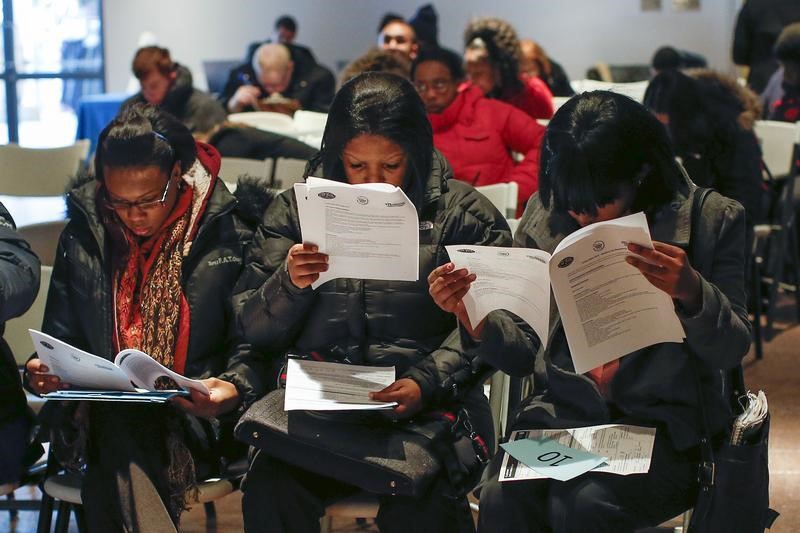By Scott Kanowsky
Investing.com -- The number of Americans filing for unemployment insurance unexpectedly decreased last week, according to Labor Department data on Thursday, in a possible sign that the U.S. job market remains strong despite a string of recent Federal Reserve interest rate hikes.
Seasonally adjusted initial jobless claims totaled 222,000 in the week ending September 3, declining to a three-month low from the downwardly revised figure of 228,000 in the previous period. Economists had expected the reading to climb to 240,000.
It marks the fourth straight weekly drop for unemployment claims.
Meanwhile, the four-week moving average, which aims to smooth out volatility in the weekly figures, also slid to 233,000 from 240,500.
The string of steadily falling data points suggests that the labor market is still in robust health, a trend that is likely to play into the Federal Reserve's monetary policy plans moving forward.
The central bank has already raised borrowing costs by 225 basis points since March in a bid to cool down red-hot inflation. Continued job market tightness, and the subsequent support it brings to demand, may serve to bolster the case for keeping those rates higher for longer.
Economists have said that only a jobless claims reading between 270,000 - 300,000 would suggest some slowing in the job market.
The Fed is scheduled to hold its next meeting on September 20-21, with traders expecting it to increase rates by 75 basis points for a third time this year. Investors will be searching for clues to the Fed's plans when chair Jerome Powell delivers a closely watched speech on Thursday.
The latest weekly jobless claims reading comes after last Friday's labor market report showed the U.S. economy added 315,000 jobs in August, down from July's mark of 526,000 but still ahead of consensus forecasts for a gain of 300,000.
But tentative hints at a slight cooling may be emerging. Wage growth eased by more than expected in August, with average hourly earnings rising only 0.3% rather than the 0.4% expected. The unemployment rate also ticked up to 3.7% of the workforce from 3.5% in July, its highest level since February, but still close to all-time lows.
However, analysts said the report was broadly consistent with other data, potentially signaling that the labor market is relatively tight by historic standards.
